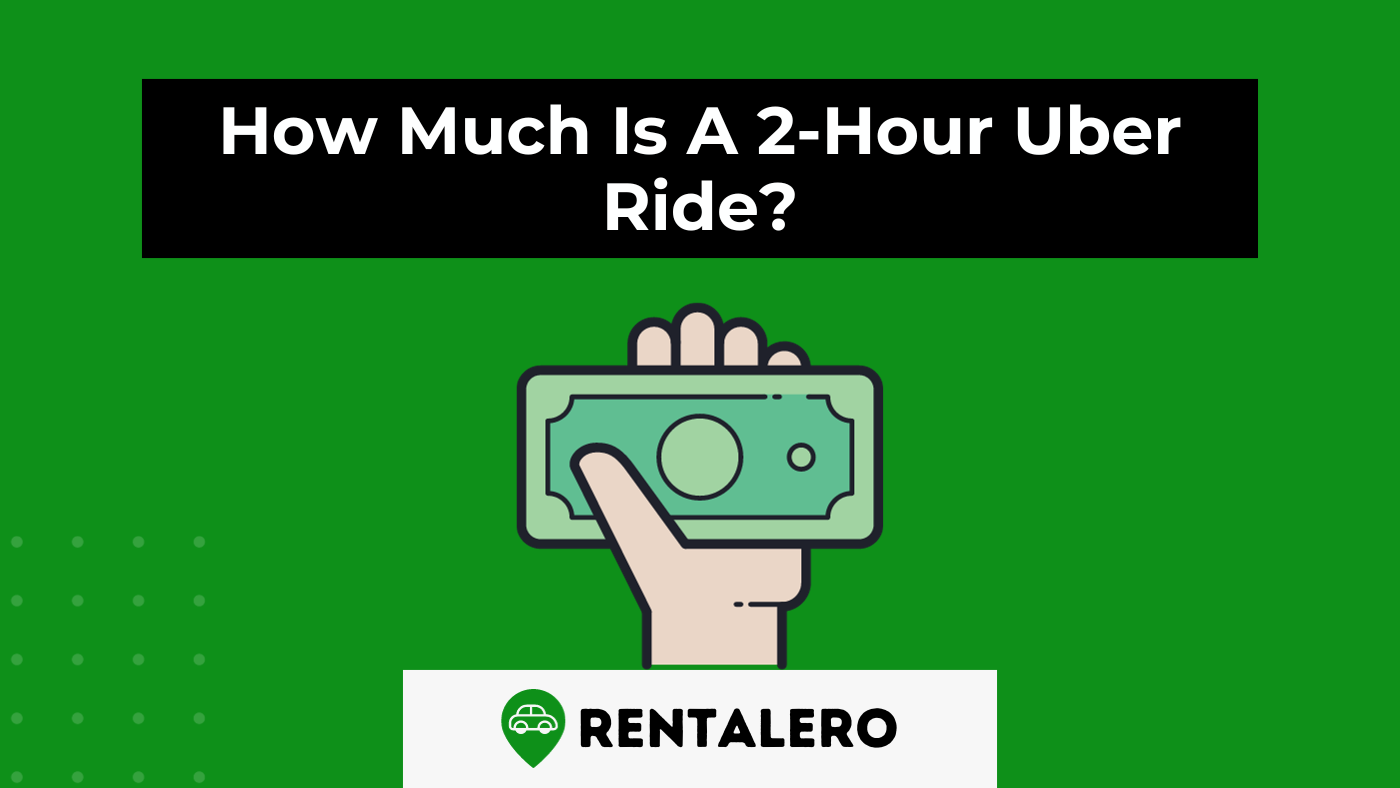Confused about the cost of a 2-hour Uber ride?
Eliminate the guesswork and get the information you need to understand the varying prices for a long journey.
In this post, we’ll unravel the mystery behind the cost of a 2-hour Uber ride.
We’ll break down factors like distance, location, and time of day—all the things that can change the price.
Why should you care?
Knowing these details will save you from unexpected costs and make your Uber experience smoother.
Ignoring them could lead to a surprise bill that’s more than you bargained for.
Ready to get started?
Advertising links are marked with *. We receive a small commission on sales, nothing changes for you.
Key Takeaway
- The cost of a 2-hour Uber ride depends on multiple factors such as distance, location, time of day, and surge pricing.
- Even with an initial estimate, real-world factors like traffic jams, route changes, and sudden surge pricing can alter the final fare.
- Understanding the complexity of estimating a 2-hour ride helps in planning, as distances can vary based on traffic conditions and routes.
- Tools like Uber’s fare estimator and awareness of local conditions can help you anticipate costs, though they are not guaranteed.
- Building a budget-friendly Uber experience for a 2-hour ride requires awareness, communication with the driver, and flexibility to adapt to changing conditions.
Understanding Uber’s Pricing Structure
When you request an Uber ride, the app instantly calculates your fare. But what factors into this calculation?
Distance Travelled
The distance you travel is fundamental to your fare. Short rides within the city are usually more affordable.
Longer rides, especially inter-city ones, cost more. It’s a straightforward calculation, but essential to know.
Time of Day
Ever observed how fares fluctuate throughout the day? It’s not random.
During peak hours, like mornings and evenings, ride demand is high. This heightened demand leads to higher prices.
Off-peak hours, like midday, typically have lower costs.
Location
Your location significantly impacts the fare. Urban areas with heavy traffic and higher operating costs may have increased fares.
In contrast, suburban or less populated areas offer slightly lower prices. Your pickup and drop-off locations both influence the final cost.
Surge Pricing
Sometimes, you notice a substantial increase in fares.
This phenomenon, known as surge pricing, occurs when many people request rides simultaneously.
It could be due to an event, bad weather, or simply a busy time of day.
Surge pricing helps balance supply and demand, but it’s good to know it when planning your ride.
Using Uber’s Price Estimator
Here’s a step-by-step guide to getting an estimate for your next ride.
Step 1: Visit the Uber Website or Open the Uber App
Starting is as easy as opening the app on your phone or visiting the Uber website.
You must sign up or log in if you’re new to Uber. If you’ve used Uber before, you’ll already know this process.
Step 2: Enter Your Pickup Location and Destination
Next, you’ll need to enter where you are and where you want to go.
This is how Uber calculates the distance of your ride. Just tap the right spots on the app or click on the website.
Step 3: Select the Type of Ride You Want
Uber offers various ride options, from economy to premium. Each has a different price.
Pick the one that suits your needs and budget. It’s as easy as clicking a button.
Step 4: Viewing the Estimated Fare Range for Your Trip
Now comes the interesting part. After selecting your ride type, the app or website will show you an estimated fare range.
This estimate considers the distance, time of day, location, and other factors we’ve already discussed.
Remember that the price shown is an estimate, not a fixed cost. Real-world factors like traffic and route changes can alter the final price.
Surge pricing might also apply, raising the cost during busy times.
Factors That May Alter The Final Fare
Even with Uber’s Price Estimator, your final bill might differ from the initial quote.
Let’s understand why that can happen and how you can be prepared.
Why Is The Estimate Not A Final Guarantee?
The price you see before booking is an estimate. It’s based on the current conditions and the data Uber has.
Several factors might change before or during your ride, leading to a different fare.
Impact of Traffic and Route Changes
Traffic jams and road closures are part of city life. They can’t always be predicted, and they might change your route or slow down your ride.
These changes can increase the distance and time of your ride, leading to a higher fare. Here’s what you should know:
Traffic Jams
If you get stuck in traffic, the ride takes longer. Time costs money, so your fare goes up.
Route Changes
Sometimes, the driver has to take a different route due to road closures or other reasons. If the new route is longer, the fare will increase.
Surge Pricing
We’ve talked about surge pricing before. But it’s so crucial to your fare that it deserves a closer look. Surge pricing happens when the demand for rides is high.
The price goes up to encourage more drivers to hit the road. Here’s what to keep in mind:
Timing
Special events, rush hour, and bad weather can cause surge pricing. If you can, avoid riding during these times.
Location
Some areas are more prone to surge pricing. Busy downtown spots during events are a typical example.
Challenges In Determining The Exact Cost For A 2-Hour Ride
Estimating a 2-hour Uber ride would be easy. Just multiply the usual fare by two.
But it’s not that simple. Many moving parts make it tough to pinpoint an exact cost. Let’s dive into what makes this such a puzzle.
Why a Specific 2-Hour Estimate Is Elusive
When you hear “2-hour ride,” you might assume it means a certain distance.
But it doesn’t. Time and distance don’t always match in the ride-hailing world. Here’s why:
Traffic Variability
Two hours in heavy traffic might cover a short distance. At the same time, an open road might cover much more.
Different Routes
There might be many ways to reach your destination. Some might be quicker, but others might take longer. Others might be shorter, but slower.
Surge Pricing Shifts
Within a 2-hour ride, surge pricing might kick in or end. It’s not always predictable.
How Variations in Factors Make It Challenging to Pinpoint an Exact Cost
With so many factors playing a role, it’s no wonder a specific 2-hour fare is elusive.
Let’s look at these challenges in more detail:
Distance and Speed Mismatch
The distance travelled varies even if you’re on the road for 2 hours. If you’re in a city, traffic might slow you down. On a highway, you might move faster.
Location Differences
A 2-hour ride in a busy city might cost more than the same time in a small town. The cost of living and demand for rides affect the fare.
Changing Conditions
Weather, traffic patterns, and even day-to-day events can make the same ride cost different amounts on different days.
What This Means for You
Understanding why a 2-hour fare is hard to pin down helps you plan better. When you know the challenges, you can be more flexible.
Use Uber’s Tools
The fare estimator gives you a ballpark figure. It’s a starting point, not a promise.
Ask Questions
If you have a long ride, talk to the driver. They know the local conditions.
Stay Informed
Watch local news for events or weather that might affect your ride.
Conclusion
Navigating the cost of a 2-hour Uber ride is no small feat, but it’s not impossible.
You’ve learned about things like distance, location, and surge pricing. They all shape the final fare. Remember, the price is never set in stone.
It can change with traffic jams, route changes, or the time of day.
Stay ahead of surprises by using Uber’s tools and staying informed. Talk to your driver, watch local news, and use the fare estimator.
With a little effort and knowledge, you can make your 2-hour Uber ride a smooth, budget-friendly experience.
It’s all about being aware and ready. That way, you can enjoy the ride without any unexpected bumps in the road.
Frequently Asked Questions
How does Uber calculate the cost of a ride?
Uber calculates the cost of a ride based on factors like distance travelled, time of day, location, and whether surge pricing is in effect. Variability in traffic, weather, and local events can also influence the final fare.
What is surge pricing, and how can I avoid it?
Surge pricing occurs when ride demand is high, causing fares to increase. You can avoid it by avoiding busy times like rush hours, special events, and poor weather conditions, or by checking the app for surge notifications before booking.
Can I get an exact quote for a 2-hour Uber ride?
Pinpointing an exact cost for a 2-hour ride is difficult due to variations in distance, speed, location, and changing conditions like surge pricing. You can use Uber’s fare estimator for a ballpark figure, but the final fare may vary.
Why did my final fare differ from the estimated price?
Your final fare might differ from the initial quote due to unforeseen factors like traffic jams, route changes, surge pricing, or other real-world conditions that can alter distance and time.
How can I ensure a more budget-friendly Uber ride?
You can enjoy a budget-friendly ride by using Uber’s fare estimator, avoiding peak hours, being aware of surge pricing, and communicating with the driver about potential cost-saving routes or timing. It helps to stay informed about local conditions that might affect fares.

Nzoputa has been writing for Rentalero since day one and is one of our most experienced members when it comes to the rental industry. For her, nothing beats Uber!
Advertising links are marked with *. We receive a small commission on sales, nothing changes for you.

